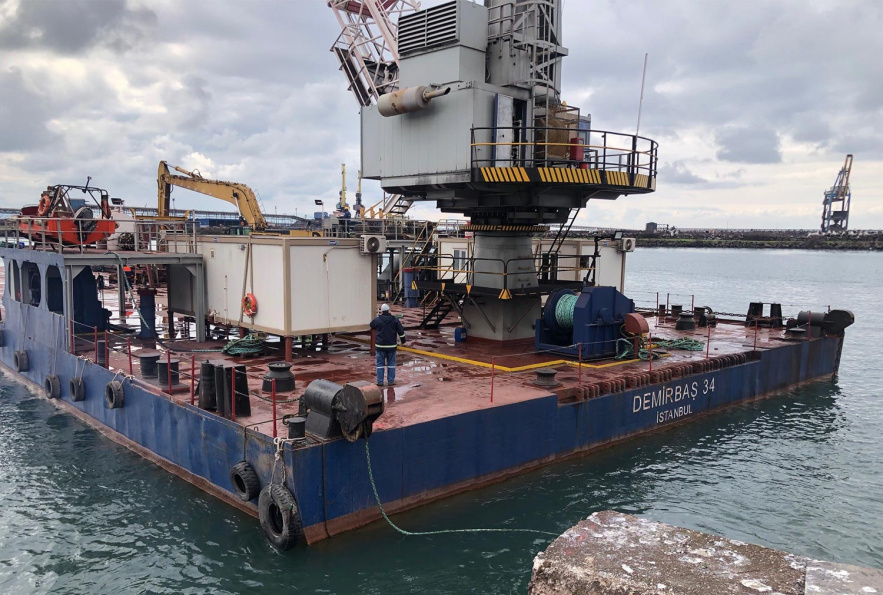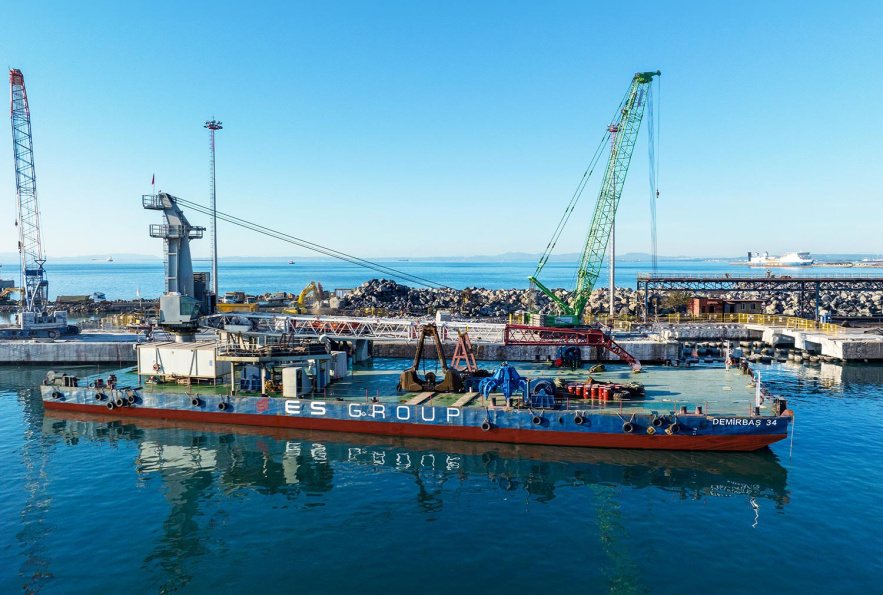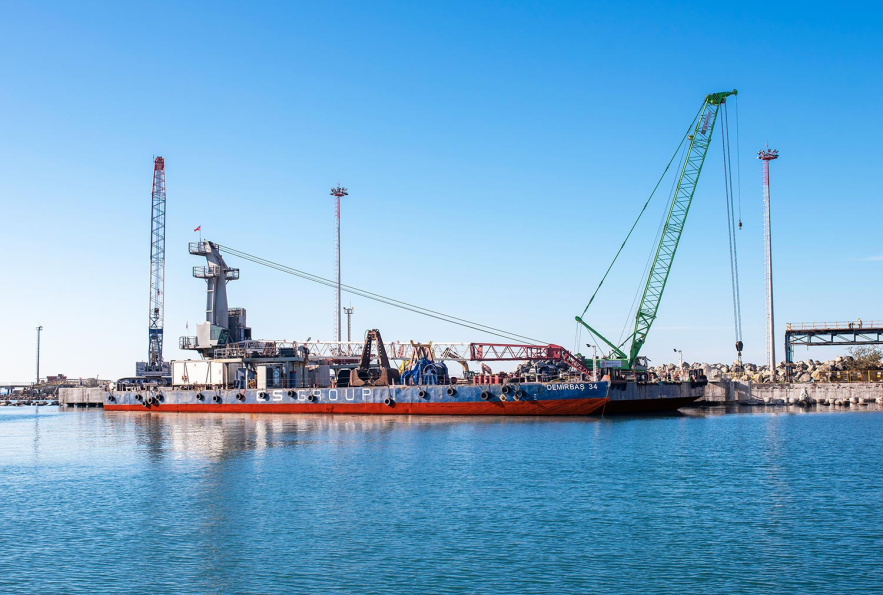Floating Crane
Floating cranes are actively used in bridge, port, and offshore construction projects, including tasks such as wreck recovery, debris removal, material transfer between ship-to-ship or ship-to-shore, block/tetrapod/antifer/stone placement and lifting, pile driving, breakwater/pier/dock construction/demolition, reinforcement, dredging, filling, and discharge lines.
A floating crane is a type of crane designed to perform heavy lifting tasks in marine environments, mounted on a floating platform or barge. These cranes are integral to construction, transportation, and offshore projects where land-based cranes cannot operate effectively.
Barge or Hull
The crane is mounted on a large, stable barge or hull that provides lifting power and supports the structure of the crane. The platform is often equipped with ballast tanks to maintain stability and adjust the crane's height.
The boom is the long arm that extends horizontally or at an angle, allowing the crane to reach over the water and lift heavy loads.
Winch
Located on the crane's boom, the winch is responsible for lifting and lowering loads. The trolley moves along the boom to adjust the load's position.
Ballast System
To balance the weight of loads and prevent tipping, floating cranes use ballast tanks filled with water or other materials to adjust the crane's stability and trim.
Floating cranes are designed to lift extremely heavy loads that exceed the capacity of land-based cranes. This includes the lifting of large components for offshore platforms, ships, and construction projects. They are also used in shipyards to lift large sections of ships or for repairs on vessels in the water. Additionally, they support the assembly and maintenance of offshore oil platforms, wind farms, and other structures.
Floating cranes can operate in deep waters and reach remote areas inaccessible to land-based cranes. Their ability to lift extremely heavy loads makes them suitable for large-scale industrial projects.





